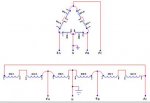What are the benefits to this and is this obsolete or still used? Why would you need 3 phase 240V i guess is my question?
Start with the understanding that electrical systems have evolved over the years. We didn't always have stop signs and stoplights, but our experience has taught us which intersection types require which control without people having to die there first.
Imagine you own a little factory of some sort, and one day, a salesman comes by with the new-fangled Binford 2000 machine, but it requires a 3-phase motor because of the load. All you have is a 120/240v 1ph service.
The simple solution is to add one (open Delta) or two transformer(s) to the one you're on, add one conductor to your drop, replace the meter and base, add a separate 3ph disco for the new machine.
Now, you're being supplied by your original two lines for all your existing loads as before, and those two plus the new one provides the 240v 3ph Binford, and all with minimal disturbance to your business.
The two existing lines and the neutral form the previous 120/240v 1ph supply, and the three lines form a 240v 3ph supply, as well as three 240v 1ph supplies. The two are basically superimposed.
The voltages between either existing two lines and the neutral are still 120v, and the voltage between any two lines is 240v. The voltage between the new line and the existing neutral is 208v.
Today, almost nobody would start from scratch wanting a high-leg, but there are advantages; with a relatively small 3ph load portion, two transformers will work, and require only two primary lines.



